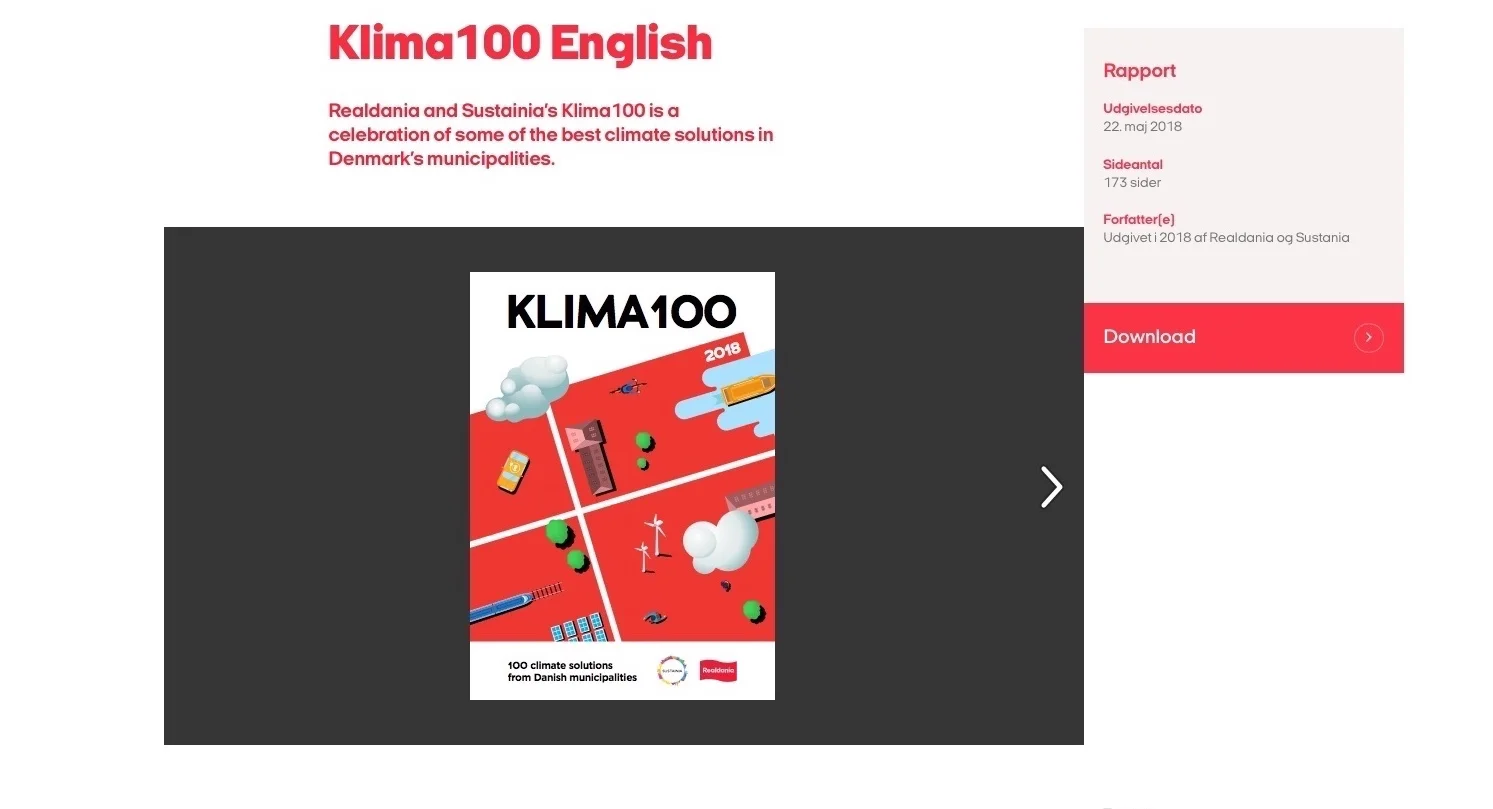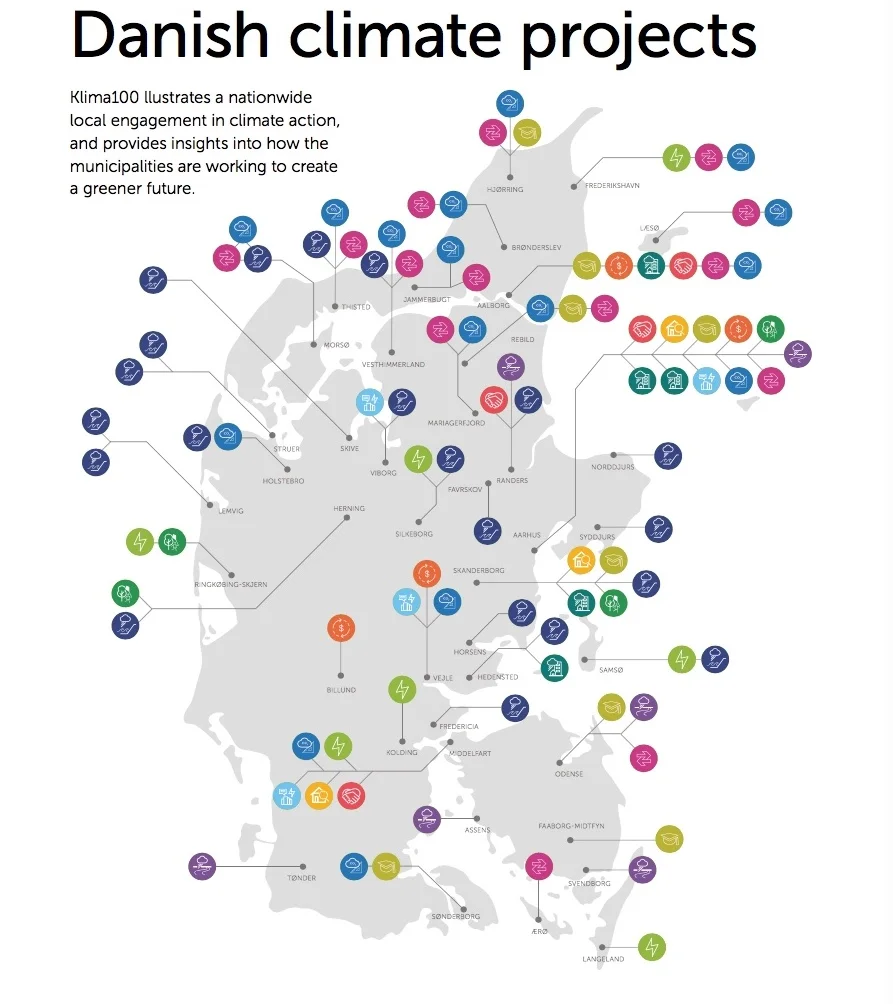Klima100 2018
/This is the publication that comes with the exhibition or - to be strictly correct - the exhibition illustrates some of the projects that are set out in this publication from Sustainia and Realdania.
This is the work of eight researchers and lead writers and eight contributors and shows 100 climate change solutions from 80 Danish municipalities. That 82 out of the 98 municipalities in Denmark submitted their climate projects for assessment indicates how seriously and how widely across the country problems of climate change are appreciated. This is no longer about theory - about the possibility of climate change and a need to tackle a problem sometime in the future - because these are real and serious problems that have been identified with solutions that were initiated after 1 January 2013 and are now up and running - up and running and open for assessment and with the potential for wider implementation.
These 100 solutions were chosen for the strategies they adopted and for their impact because they inspire change and they were judged on several criteria including for collaboration, for possible scalability, and on how they demonstrate that knowledge can be shared.
A third of the projects - as you might expect - tackled climate adaptations. In Denmark, generally that means anticipating and dealing with the consequences from an increased frequency of rain storms and, of course, the probability of floods caused by rising sea levels that could increase by 35% in the next 100 years. Denmark is a nation of islands, is low lying land and has long coast lines to the North Sea and to the waters of the Baltic so climate change has to be taken seriously now and solutions have to engage and motivate people.
Klima 100 2018 identifies the lack of projects from both agriculture and food production so these industries appear to be slower in anticipating or pre-empting the consequences of climate change but there were also new approaches that have emerged recently so there has been a growing understanding, at a popular level, of the potential of a circular economy and a growing appreciation of possible gains from these schemes so it is not just a matter, for instance, of controlling inundation, but of understanding how the community could gain distinct benefits from new wetlands or new water courses.
A growing number of solutions depend on accurate data so, for instance, monitoring of weather for a quick response to problems or, for buildings, precise monitoring of the current and long-term use of energy.
The projects or schemes were divided between 12 categories:
Responsible procurement and construction
Green behaviour and education
Renewable energy
Green land us and recreation
Climate-proof cities
Energy efficiency and technology
Climate action plans
Storm surge protection
Climate adaptation of streams and lakes
Transportation
Sustainable communities
Circular economy
The list of categories also shows that problems and solutions can sit across categories … so, for instance, new drainage might tackle an immediate threat of damage from storms but might also provide new areas for recreation and that positive gain can, in turn, be used as an incentive for a community to move on to a next stage of work. Publications like this and the exhibition have a major role in ensuring that the community is engaged and involved.
Klima 100 2018 has been published on line in Danish and in English and can be read an issuu file or can be downloaded in full as a pdf file and these projects have also been set out in a different format on the Klima pages of the Global Opportunity Explorer site.

































